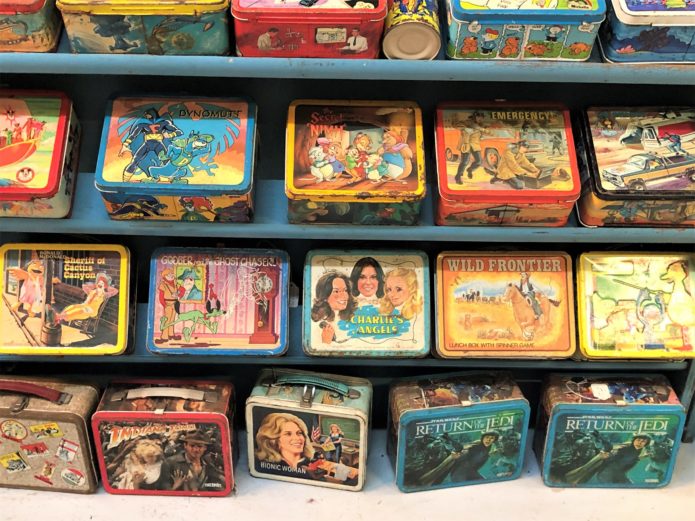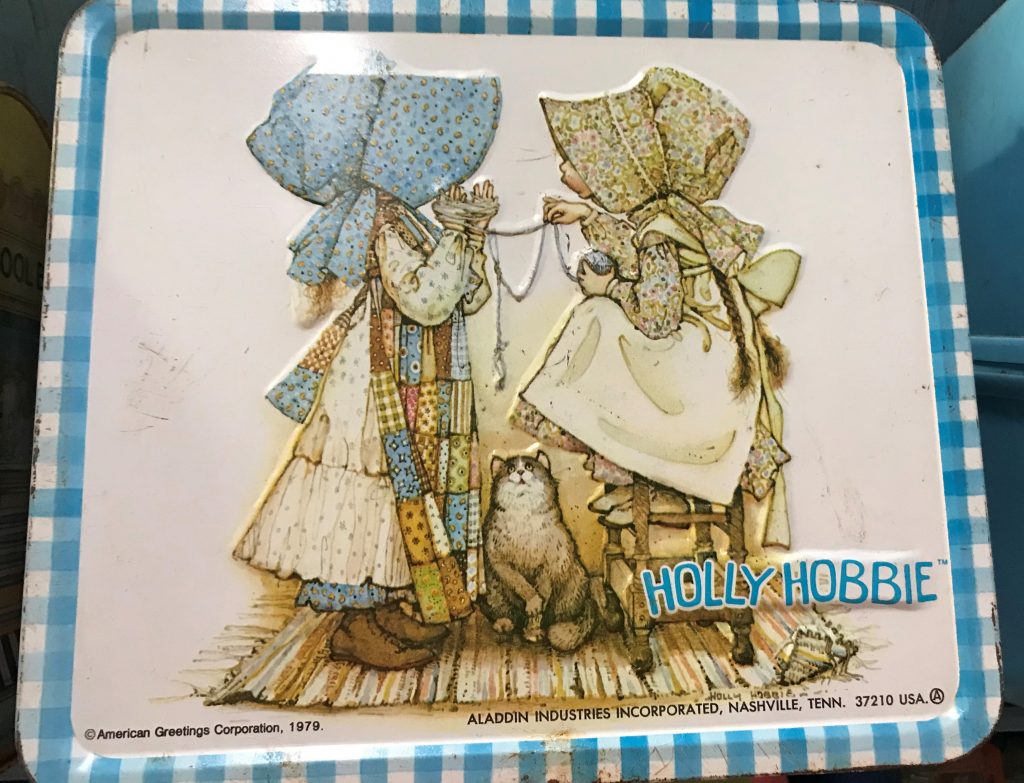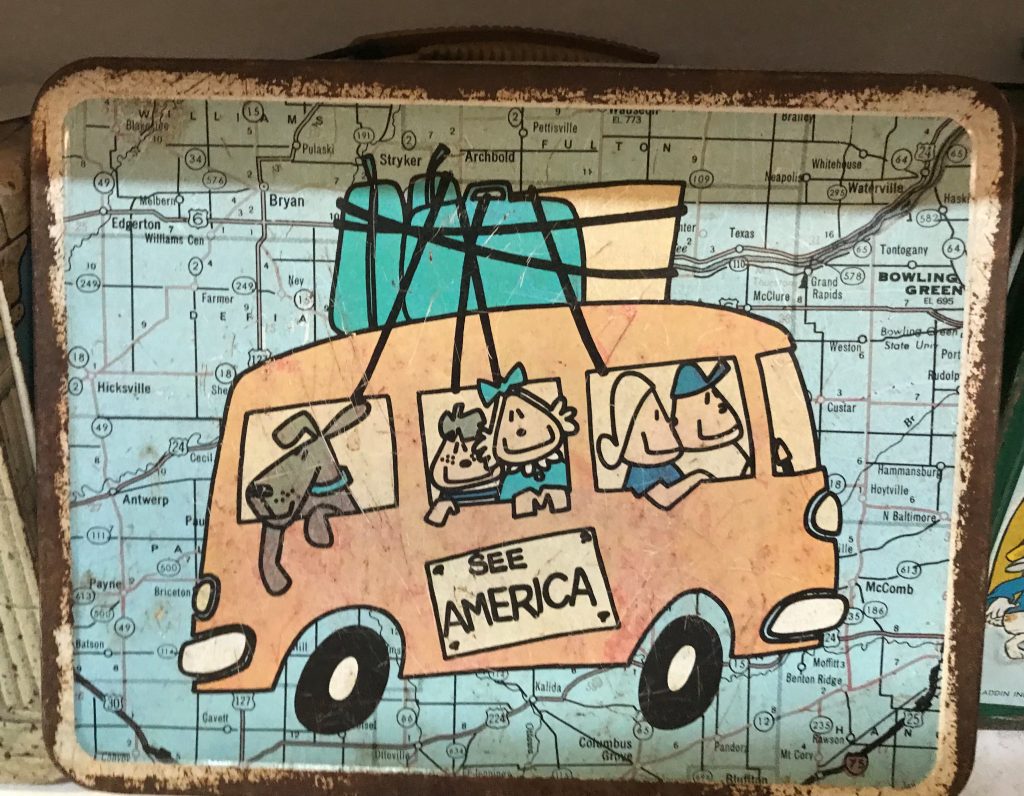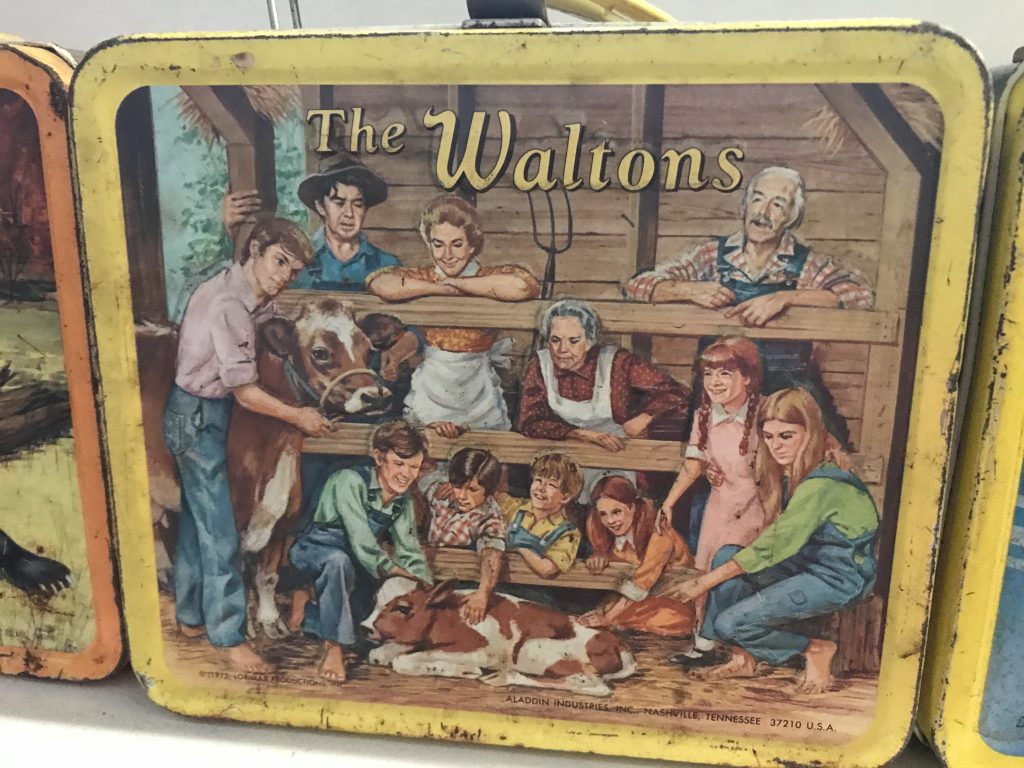Metal school lunchboxes. Remember those? Unfortunately, our children missed out as we now have insulated lunch sacks and coolers. To educate them, we ventured to the Lunchbox Museum in Columbus, GA, just 120 miles southwest of Atlanta.
Located inside River Market Antiques, only a small sign indicated we were in the right place. After paying the $5 admission fee for adults (students are free), the man behind the counter ushered us around furniture, vintage clocks, china pieces and old magazines to the other side of the store. He pulled back a curtain where rows and rows of metal lunchboxes greeted us.
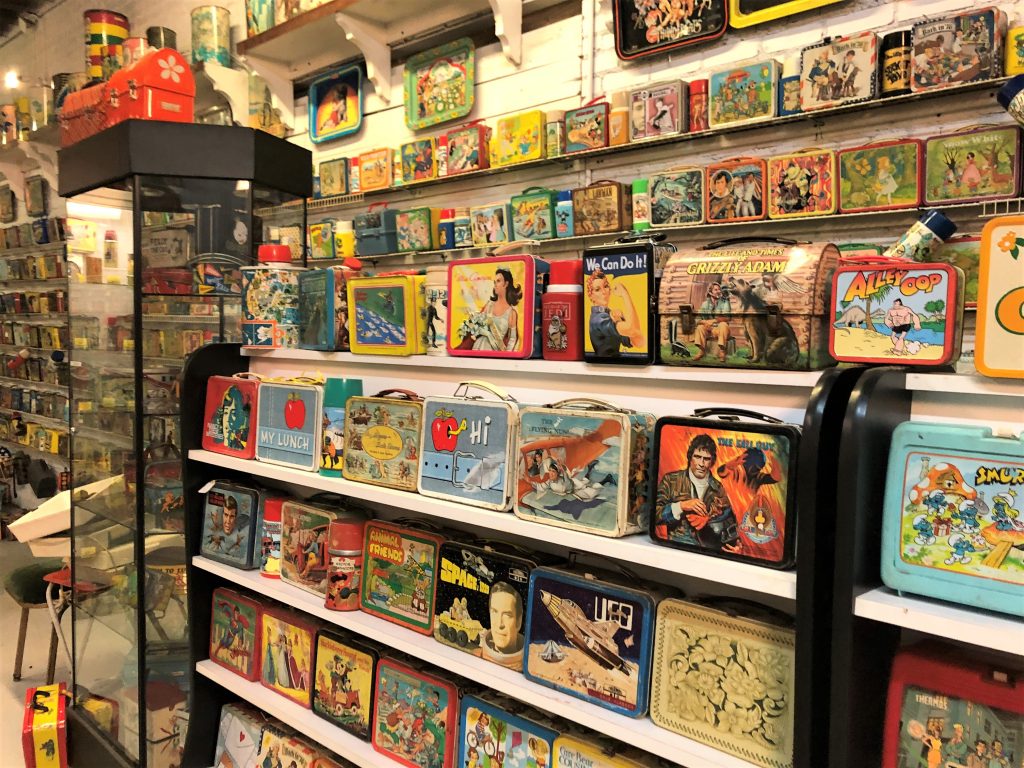
Rare Items
The curator took us to the glass case with the museum’s most valuable lunchbox set – Toppie the Elephant, which the owner, octogenarian Allen Woodall, bought for $5,000. Toppie was the promotion from Kroger’s Top Value Stamps ( a competitor to S&H Green stamps) in the 1950s.

Before leaving us to wander alone, he told us about the demise of metal lunchboxes. Apparently, an elementary-age kid in Florida hit another kid with his lunchbox at school. Parents got mad and joined forces to ban metal lunchboxes from the school. Over time, they fell out of favor in other school districts until the metal lunchbox industry as we knew it died out in the mid-1980s.
Homage to Pop Culture
He also mentioned that the lunchboxes usually advertised TV shows and movies, although some focused on celebrities and products. I quickly spied Pele and Evil Knievel which were popular with the boys at my elementary school.

My husband spotted the Peanuts lunchbox he had, while I found the Holly Hobbie one I think I had in 3rd grade. Our kids laughed at us as we’d yell out our finds: “The Partridge Family,” “G.I. Joe,” “Little House on the Prairie” “Hong Kong Fooey,” and “Welcome Back Kotter.”
We explained to our kids that we always got a new lunchbox at the beginning of the school year and it was the one thing that made going back to school somewhat fun. I now see that it was a great way for the TV networks to advertise their new fall line-ups as well.
Not only was it a fun memory of the lunch boxes, and the thermoses that came with them, but it was a reminder of the TV shows, people and events that dominated our culture. I fondly recalled how the Bicentennial in 1976 was a big deal and everything screamed Americana.
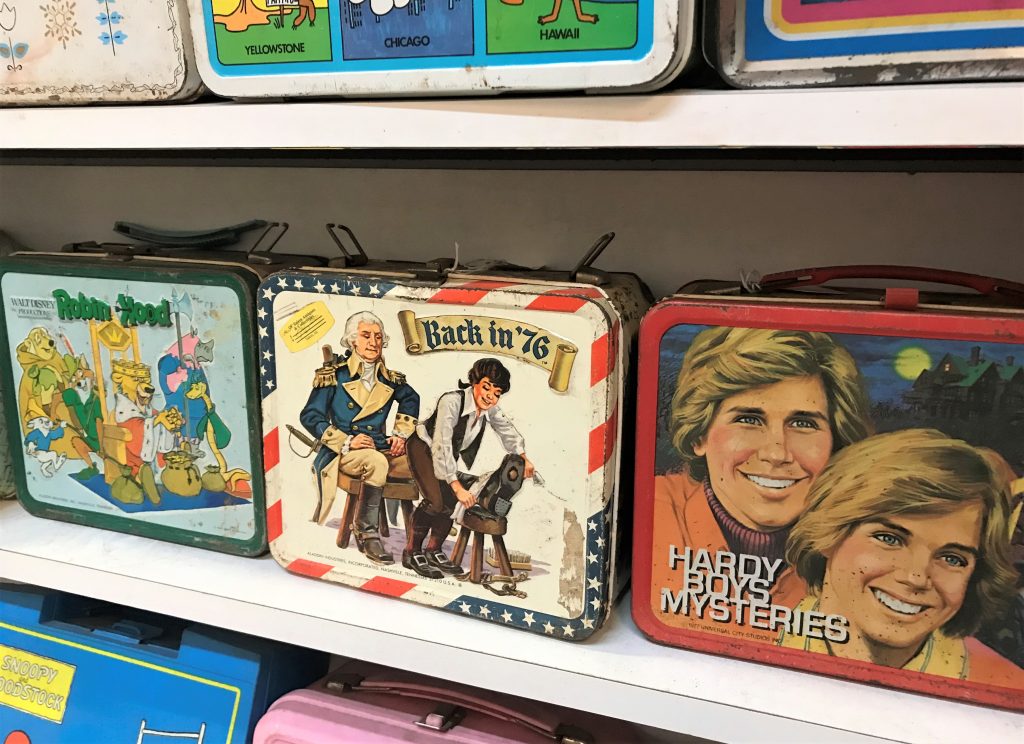
Besides displaying some 2,000 lunchboxes, they sell them as well. For more information and their hours, click their website here.
Downtown Columbus
Next, we went to downtown Columbus, which is actually called Uptown Columbus. Due to massive revitalization projects, the area boasts many restaurants and the 22-mile River Walk.
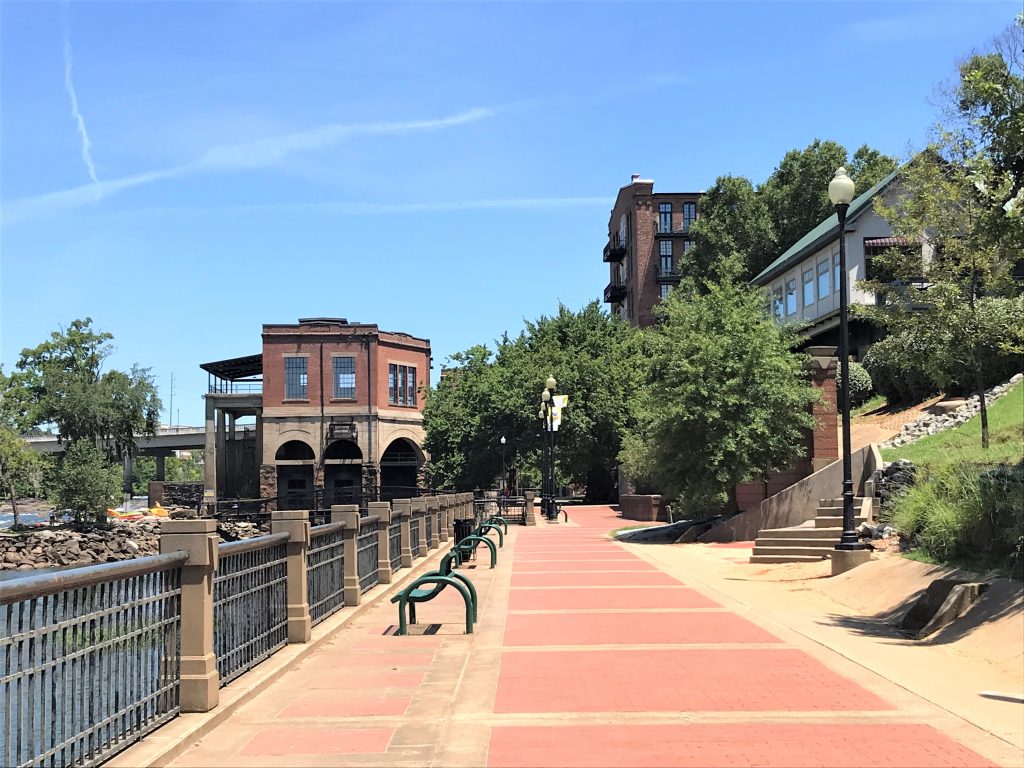
The Chattahoochee River is only navigable from the Gulf of Mexico to Columbus. Back in the day, large textile mills flanked the river. Today, many of these converted over to loft condo spaces, adding to the area’s appeal.
While Dear Hubbie (DH) and Thing 2 rode bicycles, Thing 1 and I walked on the path until we came to a large group of whitewater rapids. With a view of Alabama across the river, we sat on the rocks. Soon, kayakers and whitewater rafters tested their paddling skills.
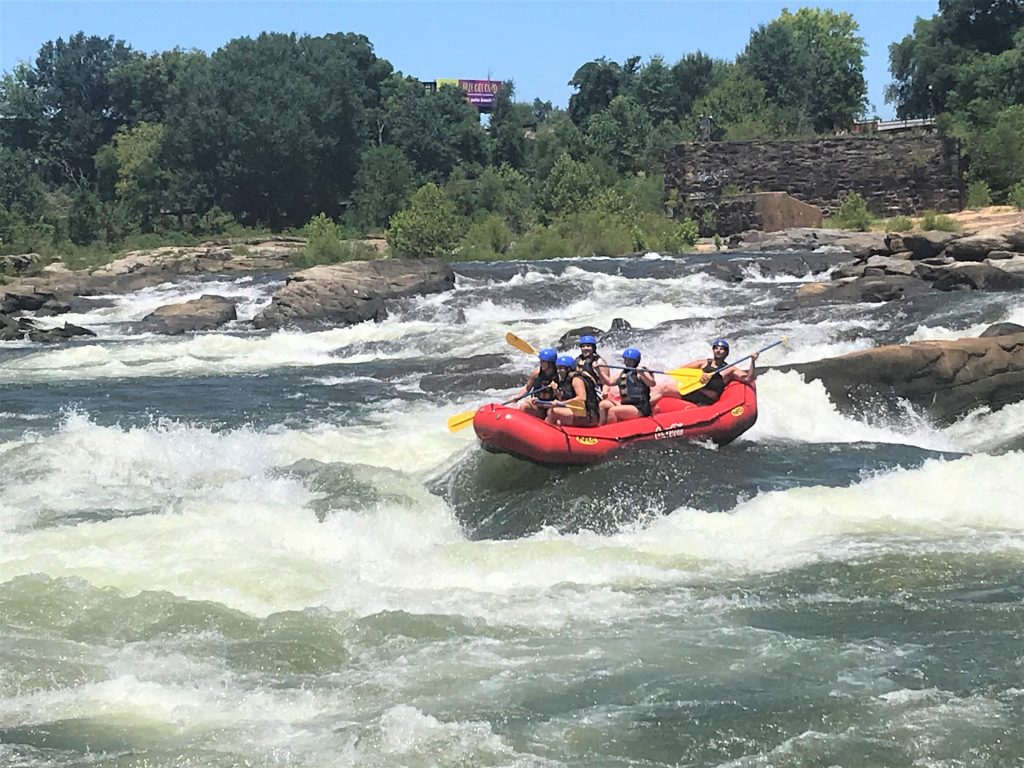
Several times, the rapids caused boaters to spill overboard. I could see why they wore helmets.
More Things to Do
Before heading home, we looked at other offerings in Columbus. The National Infantry Museum details the history of U.S. soldiers from 1775 to the present in 190,000 square feet of exhibit space. Also, the Coca-Cola Space Science Center offers Planetarium shows and items from NASA space shuttles. Unfortunately, both places are temporarily closed due to COVID restrictions.
We’ll just have to come back and maybe add whitewater rafting as well!
